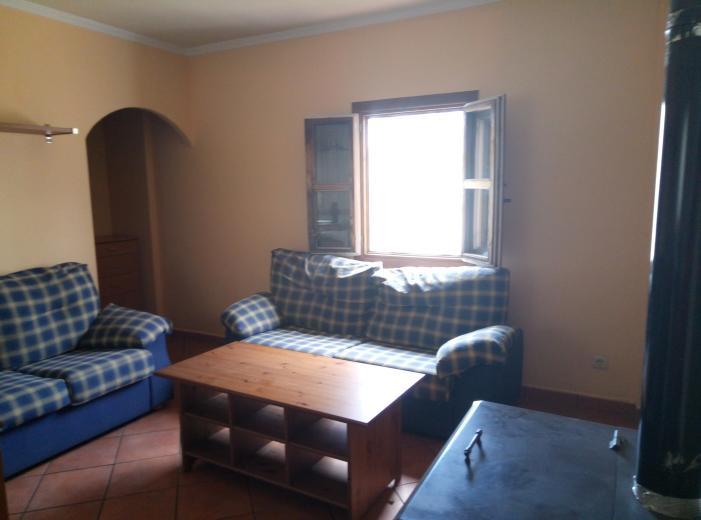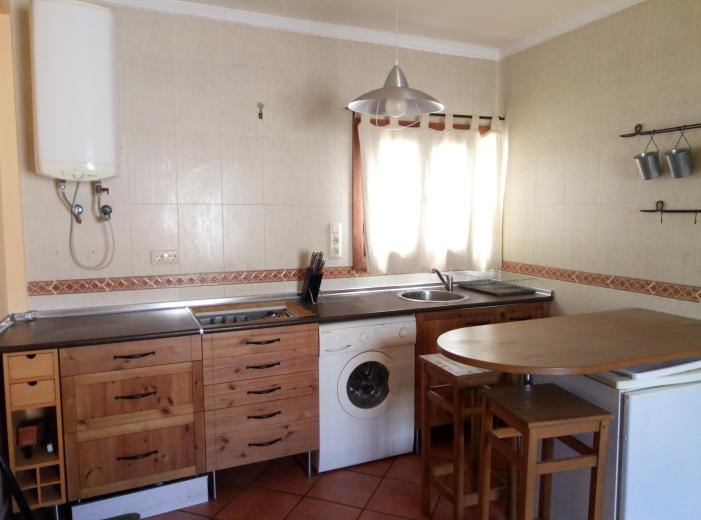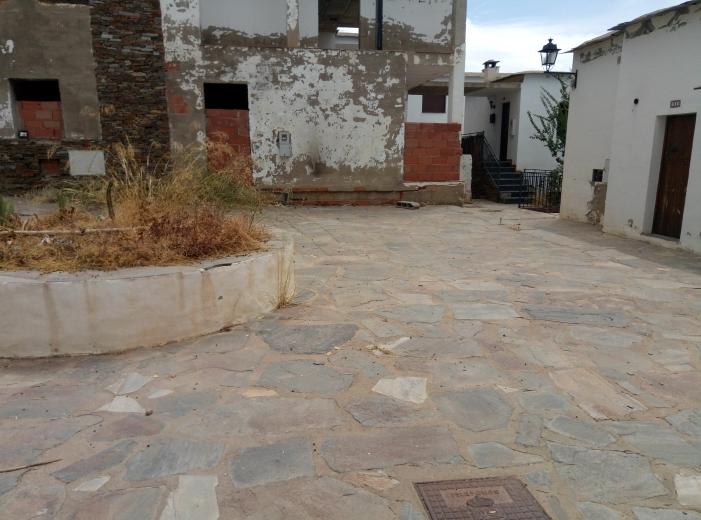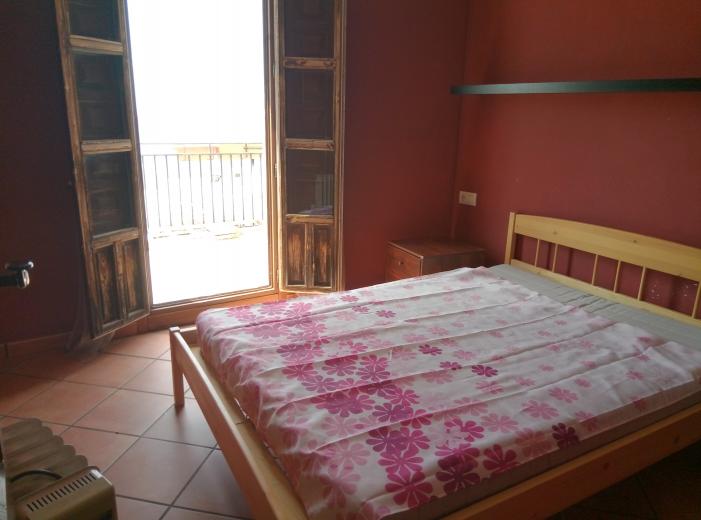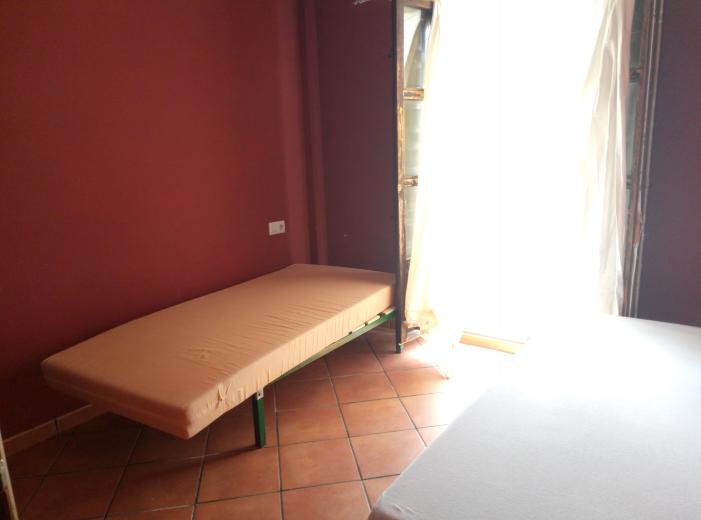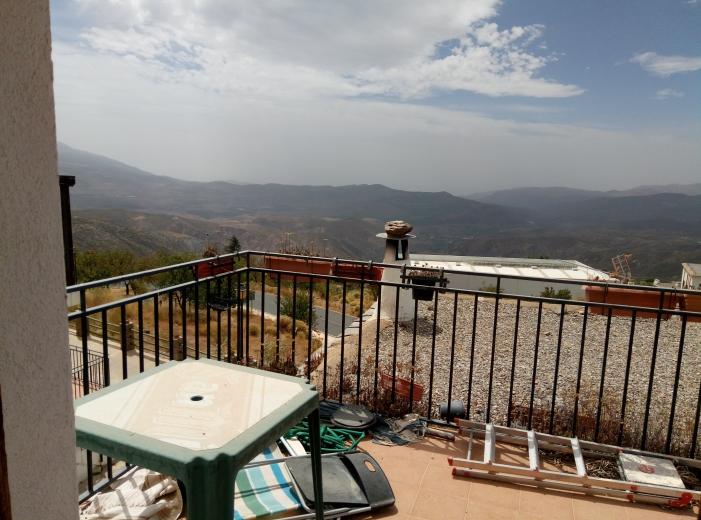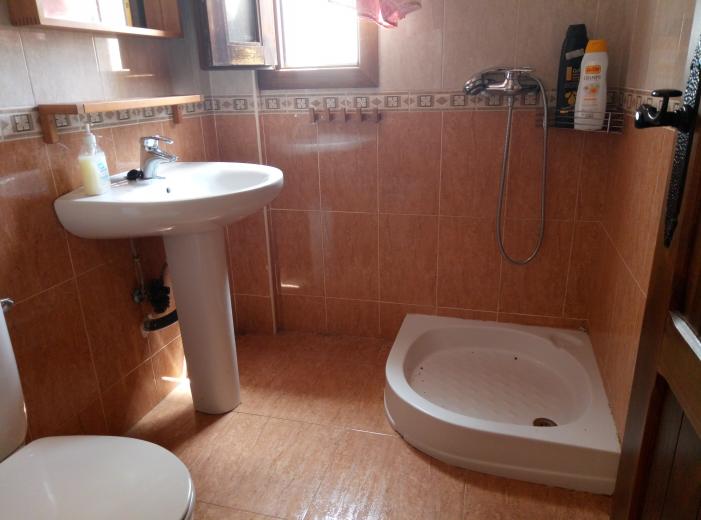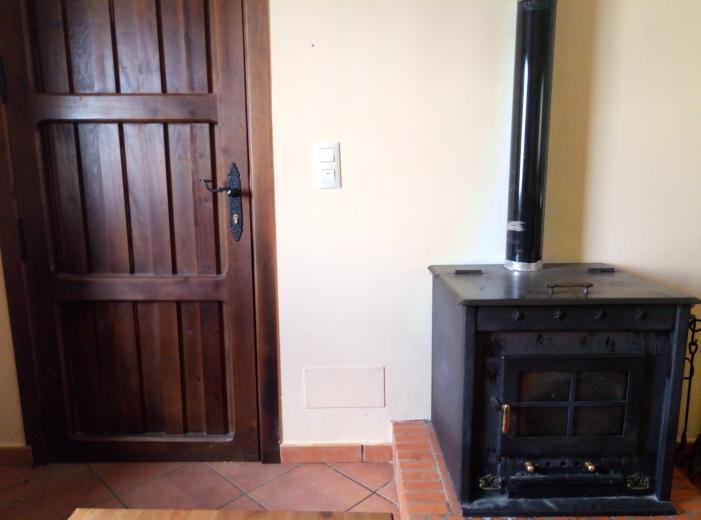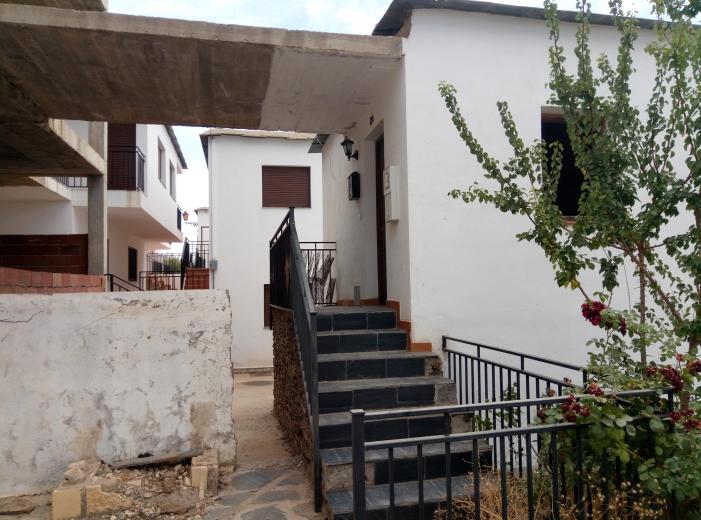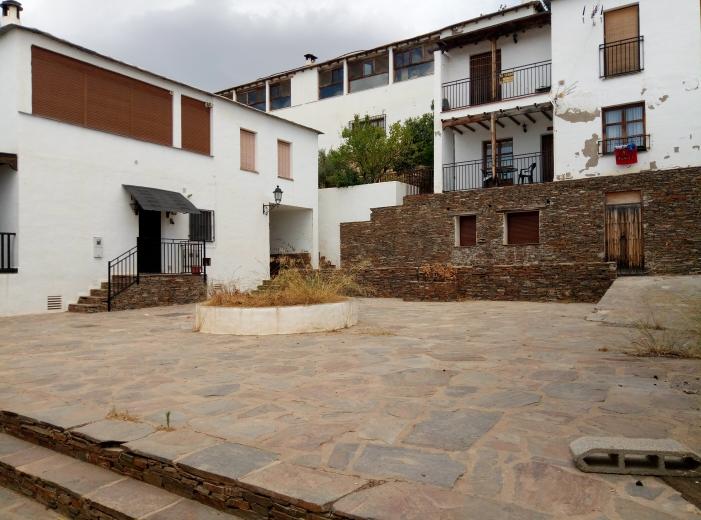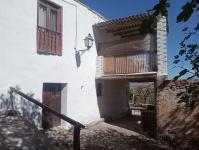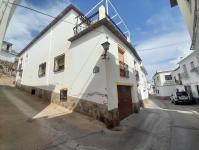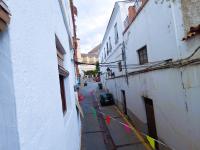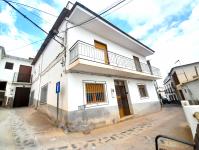almost new floor of two door
ORIGEN OF THE NAME: probably Roman (from laurus or "laurels" that grew in the area)
almost new apartment with two bedrooms living room with fireplace, terrace with incredible views of the valley of the Alpujarra Granadina, and on clear days you can see the sea
The village of Laroles has all the basic amenities. It has been somewhat modernised, but it still retains an Alpujarran feel and a respect for its Moorish past.
WHAT TO SEE
The church, Nuestra Señora Del Rosario, was built in the 16th century and is famous for its tower, which was added in the 18th century and is topped by a domed
cupola unique in the Alpujarra.
La Fuente de la Virgen (fountain near the main square) was erected in 1681. Beneath the marble virgin and child, the inscription promises "40 days of indulgence for one Ave María".
There is an aljibe (or water tank) in the village most likely dating from the Middle Ages. It has an arched roof and the remains of some paintings on the wall. It is privately owned, but the owner will show you round. Contact: Francisco López Zurita at C/ San Sebastian 8. '
There are two traditional lavaderos (or wash houses) still in use in the village (one below the park - literally - and the other at the west end of C/ Agua).
A short walk east out of the village (along a track on the right as you go up Paseo de San Antón) takes you to the Fuente de Mauricio. Recently restored, the fountain brings back fond memories to many in the village as it used to be something of a lovers' lane.
Leaving the village west this time, the GR7 (in front of the nursery school) takes you close to the watermills and past some ancient stone eras (or threshing cirdes).
If you follow the main road down the hill in the direction of Mairena, you will come to the Nevada recreation area, an open air sports installation for passersby to put their fitness to the test. There are also various spring water fountains, one with ferruginous water. Where else could you find a gym with fresh air, amazing views and mineral water on tap straight from the mountain?
"Las bestias" hoy en día se siguen utilizando para trabajar en el campo Mules are still used today to work the land
El Pago de Joplón is the site of the ancient village of Joplón. The village dated from Roman times, when they began mining in the area between the 1 st and 3rd centuries, a mining tradition that continued until the 19th century. The plaster mines (or yeserías) at Joplón include some well-preserved plaster kilns which probably date from the19th century and which can be seen on the Joplón walk (see back for details).
The ruins of one of the oldest castles in the Alpujarra, the Castellejo de lúbar, are to be found on a small hillock to the left of the Laroles-Mairena road (as you round the first bend after the bridge), next to the big water balsa. Built in the 8th century, it served as a refuge during the frequent rebellions of that era between various ethnic groups and the ruling Omeyas of Cordoba. These days, only the outline of the outer wall remains. However, it is worth a visit, if only for the view, a breathtaking panorama of the area that reminds us of why this spot was chosen as a lookout post.
Fuente: Folleto oficial del Ayuntamiento de Nevada : "Nevada: descubre la tranquilidad" Autora de los textos: Anna Kemp
Eficiency
Coming soon

